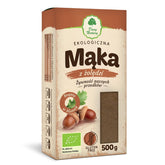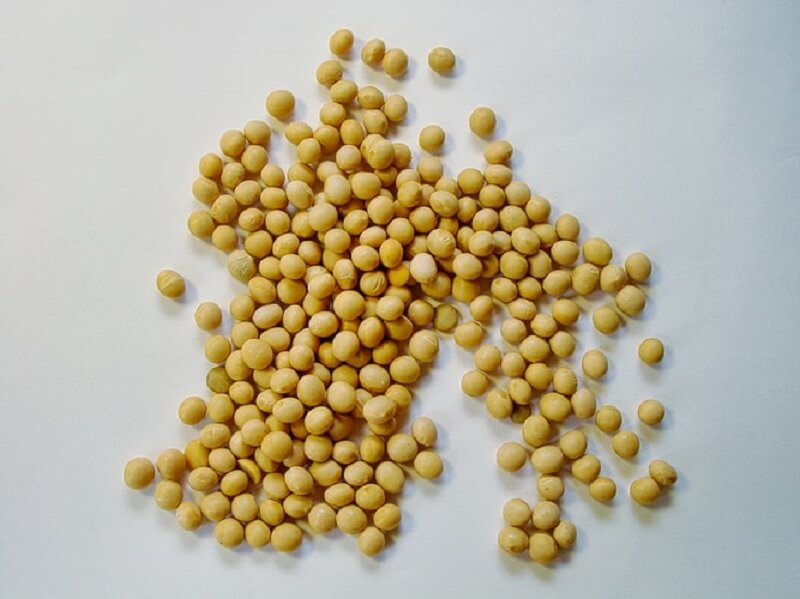Soy - what effect does it have on the body?
- Nutritional value of soybeans
- Where do we find soybeans?
- The effect of soy products on the body
- Cardioprotection
- Antioxidant effect
- Contraindications
- Summary
- Bibliography
Soy is the most popular source of protein, excluding animal and animal products. It is not only appreciated by vegetarians and vegans, but can also be a great starting point in your daily diet. It comes from the legume family, and we distinguish no fewer than 16 varieties. However, it is mainly vegetable soybeans that are widely used. Wild soybean species occur naturally in the tropics and the northern hemisphere in a temperate climate. Today, however, the soybeans we find on store shelves are almost exclusively cultivated. It is important to note that, along with corn, a very high percentage of it is a transgenic plant. Popularly known as GMO, it arose due to the good assimilation of foreign genes by soybeans, but also the need to protect them from pests and adverse weather conditions.
Nutritional value of soybeans
After thermal treatment, soybean seeds are a source of highly absorbable protein. 100 grams contain 37 grams, which is even better than pork, beef, fish, or the popular chicken. However, keep in mind that plant-based protein is poorly absorbed by the body and does not provide all biogenic amino acids. For this reason, it is recommended to mix different plant-based protein sources. After all, it is easily digestible and keeps you full for a long time. Let's move on to carbohydrates. A 100-gram serving contains about 30 grams of them and 9 grams of fiber. It also contains healthy monounsaturated and polyunsaturated fats, which have a positive effect on cardiovascular performance. {2}
Vitamins and minerals are also a strength of this plant's seeds. They contain plenty of potassium, phosphorus, magnesium, and calcium. Selenium and iron are also present, but not as much. They also contain vitamin A, which has a positive effect on vision; folic acid, which is especially recommended for women planning pregnancy; and vitamin K, which is essential for blood clotting. B vitamins are also present. {2}
Worth mentioning is the high content of phytoestrogens. These are chemical compounds with estrogen-like effects. Therefore, consuming large amounts of soy products is not recommended for men, as these compounds negatively affect potency and libido.{3}
Where do we find soybeans?
Contrary to appearances, it's not that easy to find soybeans yourself. However, many widely used and well-known products are made from them. Soy itself is closely related to vegan and vegetarian diets, as it is one of the best meat substitutes. Tofu has gained popularity, something like cheese, especially popular in Asia, but also soy drinks. of all kinds, soy burgers, and generally all products that imitate meat. Soy itself doesn't have a particular flavor, but it's advantageous because it tolerates spices well, and its flavor can be customized by adding other ingredients. I was surprised myself when I first tried soy cutlets, and to my surprise, they tasted surprisingly similar to traditional ones. This explains the popularity of soy products. They're very versatile, and everyone will find something to their liking.
You can also mention products like traditional soy sauce or soybean paste (miso), which are an integral part of Japanese cuisine. Unfortunately, these products contain large amounts of salt, so you should use common sense when consuming them. There are also soybean oils as an alternative to animal-derived oils, as well as various ointments made from soybean extracts or supplements. Soy protein is sometimes used as a filler, as we can find it in products where we wouldn't expect it. Therefore, I recommend reading labels carefully.
Like rice, it owes its popularity to its ease of cultivation and price. Moreover, due to its high nutrient density, you don't need to consume a lot of it. It's still a paradox that in our country, the prices of soy products are relatively higher than their traditional counterparts. This situation can be compared to the growing popularity of Japanese cuisine - sushi. In the land of cherry blossoms, it is one of the basic dishes along with ramen (a type of Japanese thick broth with additives) or kimchi (Japanese sauerkraut), while in Poland it is considered the so-called premium product. Nevertheless, I strongly recommend that you familiarize yourself with the topic.
The effect of soy products on the body
When consumed in appropriate amounts, soy has numerous health benefits. The phytoestrogens it contains have a positive effect on bones and can, in particular, increase their mineral density. It is helpful in the prevention and treatment of osteoporosis and the prevention of bone fractures, especially in the elderly and women going through menopause. Women are more likely to experience bone loss due to estrogen deficiency during this time.
This is evident in the example of women living in Asia. Soy is the most important source of protein there, along with fish. Studies of European and Asian women have shown that they suffer a much lower rate of hip fractures than European women{4}.
In addition, they support the proper functioning of the urinary system and reduce nervousness and irritability. For this reason, soybean extracts are a common ingredient in preparations that help women during perimenopause.
Cardioprotection
The high content of isoflavones has a positive effect on the cardiovascular system. They can significantly contribute to reducing the risk of heart attack, as well as preventing coronary heart disease and arteriosclerosis. This is due to monounsaturated and polyunsaturated fatty acids. Isoflavones reduce the level of "bad" LDL cholesterol and increase the level of "good" or HDL cholesterol. They are also helpful in maintaining normal blood pressure and normal liver function.{4}
Antioxidant effect
Studies have been conducted to demonstrate the link between the consumption of soy products and the occurrence of cancer. Soy has been instrumental in reducing the incidence of prostate and breast cancer. We are referring to the Asian population because consumption is highest there. This was due to a substance called genistein, a powerful antioxidant that effectively combats excessive amounts of free radicals.
Contraindications
People with a soy allergy should naturally avoid consuming products rich in soy. Unfortunately, it's a strong allergen, and its presence in some products makes it very important to read labels and ingredients carefully. The proportion of allergy sufferers is significantly higher in the European population than in the Asian population, as soy is a new product for us.
Doubts are also raised by the fact that soy reduces the absorption of iodine, which is crucial for the proper functioning of the thyroid gland. It also reduces the absorption of levothyroxine, a hormone used to treat hypothyroidism, so people struggling with disorders of this organ should eliminate soy from their diet after consulting a doctor. Furthermore, feeding infants soy-based formula has been shown, in some cases, to increase the risk of developing thyroid disease in adulthood.{3,4}
Do not consume soy products in excess of phytoestrogens. Despite the fact that estrogen is naturally present in the male system, too much of it can have negative effects on potency and libido and even lead to gynecomastia, which results in breast enlargement or a decrease in semen quality.
Phytic acid is another chemical compound with potentially harmful effects. It can reduce the absorption of certain vitamins and minerals, including calcium, iron, and magnesium. This only occurs after excessive soy consumption, however, people with deficiencies in these micronutrients should definitely limit soy products. {4}
Summary
Soy can be a great substitute for meat and a source of many health-promoting nutrients. Its positive effects on the body cannot be overestimated. However, let's remember to consume it in moderation in our daily diet to avoid overdoing it due to side effects.
Bibliography:
Ren Sa & Michael G. Gilbert: Glycine. In: Flora of China [online]. eFloras.org. [Accessed on June 3, 2014].
National Nutrient Database for Standard Reference Legacy Release, Soybeans, mature seed, raw, https://ndb.nal.usda.gov/ndb/search/list
- Kwiatkowska, Soy phytoestrogens in the prevention of lifestyle diseases, Borgis - Postępy Phytoestrogenia 4/2007, http://www.czytelniamedyczna.pl/2590,fitoestrogeny-sojowe-w-profilaktyce-chorob-cywilizacyjny.html
- Kwiatkowska, Phytoestrogens – Health-Promoting Role and Content in Products, Borgis – Postępy Phytotherapy 2/2009, http://www.czytelniamedyczna.pl/2641,fitoestrogeny-rola-prozdrowotna-i-zawartosc-w-produktach.html
THE PUBLISHER'S CHOICE
Dried plums 1 kg BIOGO
- £6.08
- £6.08
- Unit price
- / per
Dried White Mulberries 500 g ORGANIC
- £5.06
- £5.06
- Unit price
- / per
Almonds 1 kg BIOGO
- £10.13
- £10.13
- Unit price
- / per
Cranberries sweetened with apple juice organic 1 kg BIOGO
- £14.19
- £14.19
- Unit price
- / per
Dried dates 1 kg BIOGO
- £3.65
- £3.65
- Unit price
- / per
Unpeeled buckwheat groats 1 kg BIOGO
- £2.44
- £2.44
- Unit price
- / per
Walnuts 800 g BIOGO
- £7.50
- £7.50
- Unit price
- / per
Peeled sunflower seeds 1 kg BIOGO
- £2.63
- £2.63
- Unit price
- / per
PULLED ORGANIC SUNFLOWER SEEDS 1 KG BIOGO
- £3.85
- £3.85
- Unit price
- / per












































































































































